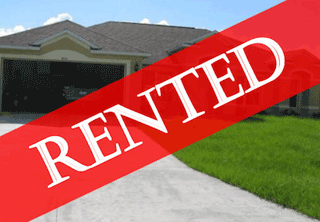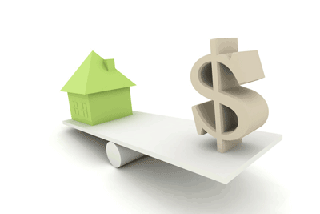Quote of the Week
“The rapid growth in new lending over the second half of 2020 was stronger than we expected. The increase in new lending is now feeding into higher prices for bricks and mortar.”
Commonwealth Bank Head of Australian Economics Gareth Aird
Vacancies Drop Amid Rent Crisis
 Vacancy rates in our already-tight rental markets fell in six of the capital cities and were unchanged in the other two in January, according to the monthly report from SQM Research.
Vacancy rates in our already-tight rental markets fell in six of the capital cities and were unchanged in the other two in January, according to the monthly report from SQM Research.
The national average vacancy rate fell from 2.2% in December to 2% in January, but five capital cities – Perth, Adelaide, Canberra, Darwin and Hobart – all have vacancy rates below 1%, while Brisbane sits at 1.7%. In regional Australia, many centres have vacancy rates below 1% in what represents a national rental crisis for people seeking tenancies.
The two biggest cities, where vacancies are highest, showed marked improvements in January, with Sydney falling from 3.6% in December to 3.2%, and Melbourne falling from 4.7% to 4.4%.
SQM’s Louis Christopher says the figures indicate the worse is over for landlords in Sydney and Melbourne. “The falls in those two cities, combined with the increased tightness in other cities and regions, has now brought rental vacancy rates down to below where they were prior to Covid19,” he says.
CBA Predicts Housing Surge
 Australia is on the “cusp of a housing boom”, according to the Commonwealth Bank, which has forecast house prices will rise 16% over the next two years.
Australia is on the “cusp of a housing boom”, according to the Commonwealth Bank, which has forecast house prices will rise 16% over the next two years.
An economics issues paper by the bank’s head of Australian economics, Gareth Aird, predicts national house prices would rise 9% in 2021 and a further 7% in 2022. The other major banks have also predicted big price rises this year and next.
While Sydney (7.5%) and Melbourne (7%) are tipped to rise moderately, price growth outside of the two largest capitals is expected to really climb. Darwin is predicted to rise 12% this year, Perth 10%, Brisbane 9.5% and Hobart, Adelaide and Canberra all 9%.
It’s a marked turnaround from the dire predictions made during the pandemic’s early days last year, which Aird admitted had taken many in the industry by surprise. “The negative impact that COVID-19 had on Australian property prices turned out to be much more muted than almost any forecaster expected, us included,” he says.
Renovations Boom Under Way
 Australia is having its biggest surge in home renovation activity ever, with Commonwealth Bank expecting it to hit overdrive throughout 2021.
Australia is having its biggest surge in home renovation activity ever, with Commonwealth Bank expecting it to hit overdrive throughout 2021.
Over $800 million a month has been approved in renovation construction over the past four months, according to the ABS, with the CBA showing its own loan approvals for alterations and additions have had a very steep rise.
CommBank senior economist Kristina Clifton says the “extraordinary pace” of growth was being supported by the Federal Government’s HomeBuilder grant, as well as low borrowing costs and pandemic limitations on travel.
“Over the COVID period, we have really seen a shift from spending on services towards spending on goods, in particular things around the home,’ she says.
Approvals for alterations and additions grew 8% in December to sit 37% higher over the year, according to ABS. Not all renovation activity was being captured in the data, according to CBA, because not all alternations and additions require building approvals.
RBA Relaxed On House Prices
 The Reserve Bank is monitoring the effects of its easy monetary policy on the economy but says there are few signs of a deterioration in lending standards at this point.
The Reserve Bank is monitoring the effects of its easy monetary policy on the economy but says there are few signs of a deterioration in lending standards at this point.
Minutes from the RBA’s February board meeting reveal that members discussed the effects of low interest rates on financial and macroeconomic stability and “acknowledged the risks inherent in investors searching for yield in a low interest rate environment, including risks linked to higher leverage and asset prices, particularly in the housing market”.
However, they concluded that there were “greater benefits for financial stability from a stronger economy, while acknowledging the importance of closely monitoring risks in asset markets”.
It comes amid predictions of a double-digit percentage rise in house prices this year as the central bank keeps its benchmark interest rates at record low of 0.1%, while also injecting $5 billion a week of liquidity into the economy via its recently-extended bond buying program.
CoreLogic’s January house price index rose 1.1% month-on-month and 3.4% over the past three months.
Houses Dominate Dwelling Sales
 In the year to 1 February, there were 459,308 properties transacted across Australia. Most of these sales were houses rather than units, according to CoreLogic.
In the year to 1 February, there were 459,308 properties transacted across Australia. Most of these sales were houses rather than units, according to CoreLogic.
The research firm says it’s not unusual for house sales to comprise the majority of transactions, with houses making up an average 70.2% of annual sales volumes over the past decade.
However, the share of houses as a portion of sales increased to 74.2% in the past year, up from 73.2% a year ago and 66.7% five years ago. “For every unit sold over the year, there were 2.9 house sales,” says CoreLogic’s Eliza Owen.
Most capital cities and rest of state regional areas saw the portion of house sales elevated in the past year, compared with the decade average.
“The introduction of HomeBuilder may have skewed demand toward houses,” she says. Since HomeBuilder started in June, new home sales have climbed. According to the HIA, new home sales in the December 2020 Quarter were almost double the level in December 2019.




